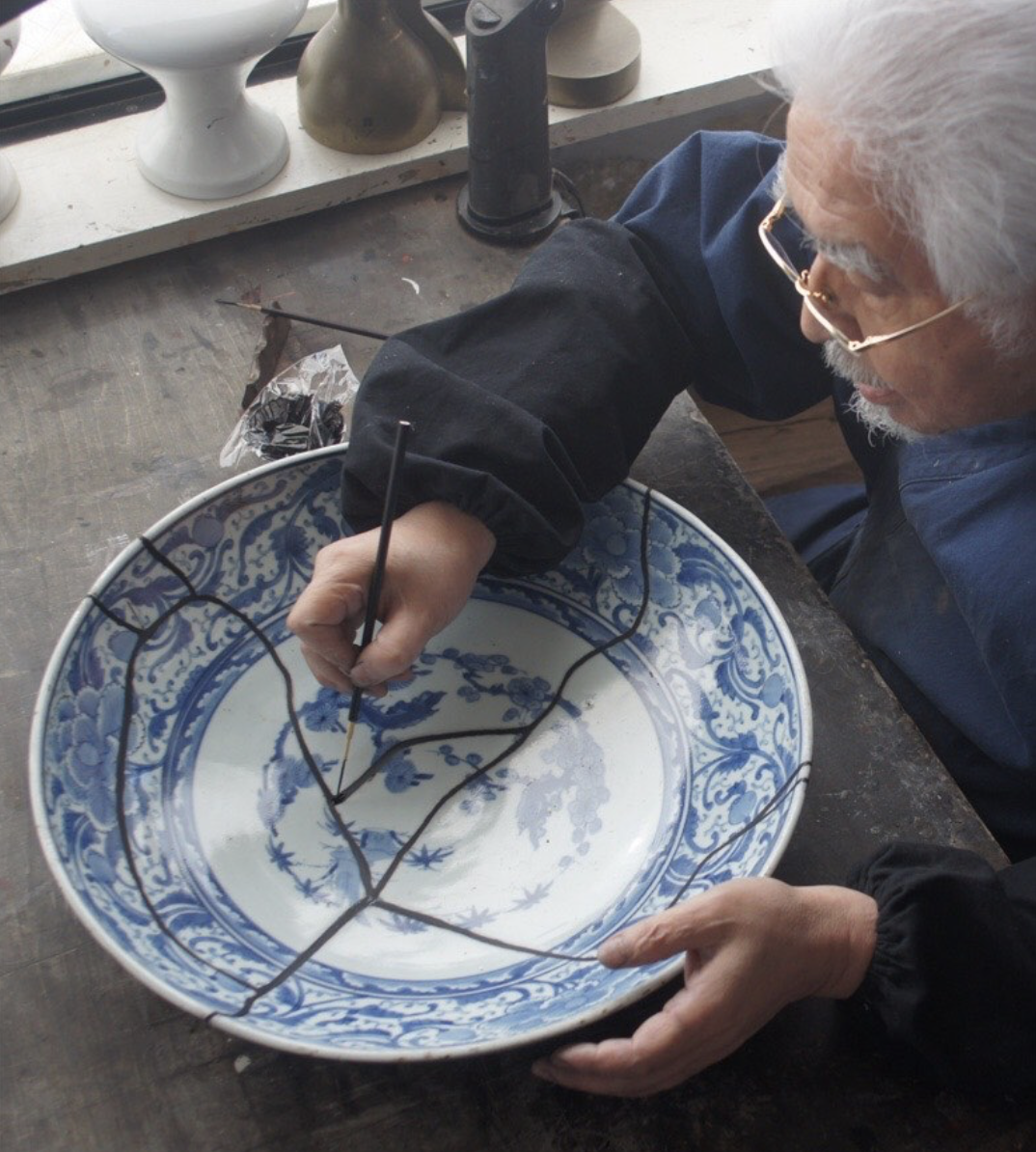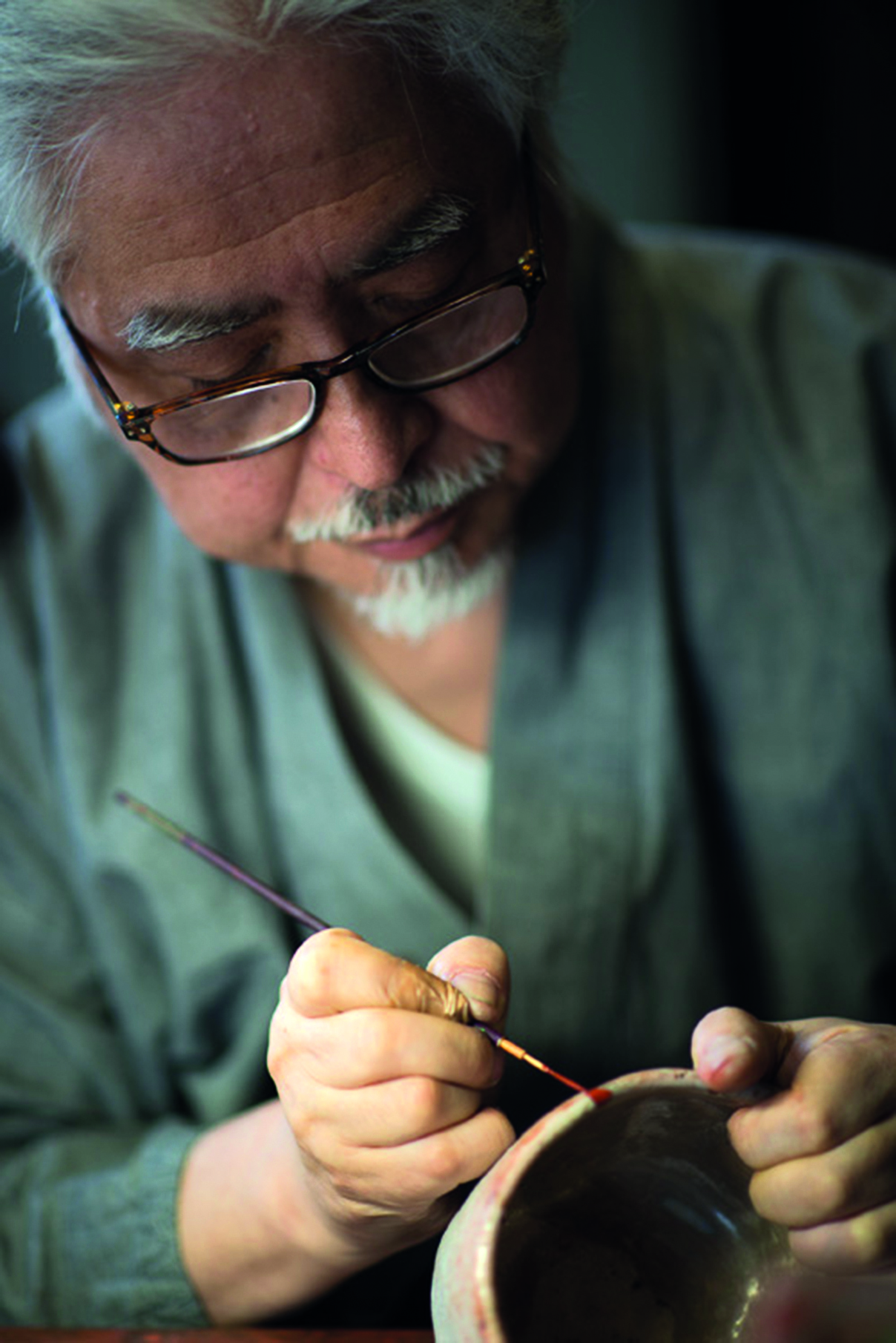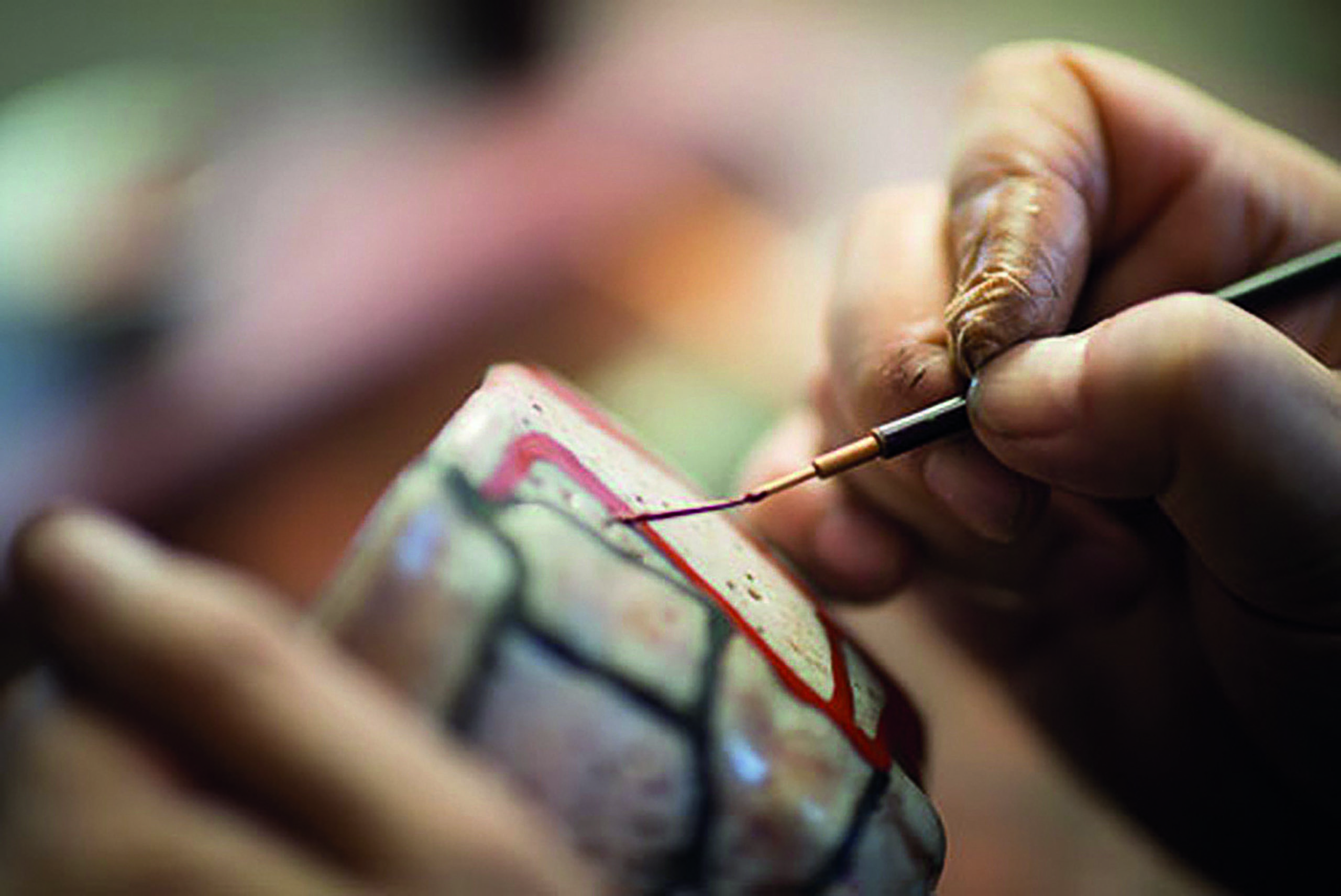Kintsugi philosophy is based on Japanese aesthetics of Wabi Sabi.
Wabi is a philosophy of finding a spiritual meaning inside despite of desolate
looks outside. Sabi is a philosophy of finding a beauty in something being decayed. Sabi, in Japanese, also means “rust”, Sabi can also mean rust on iron or blue rust oncopper.
In nature, nothing is infinite or perfect. Wabi Sabi appreciates things as they are
from the beginning to the end, while going through damages, or getting rust and so on, and ultimately finding fulfillment in a place of lacking.
Wabi Sabi philosophy was first introduced by Furuta Oribe. He was a warlord in the 16th century. At the same time, he practiced samurai tea ceremony and was known as a tea master. He also guided a production of pottery known as Oribe ware. Oribe ware is a simple rustic tea bowl with an asymmetrical shape.
Thus, his style of samurai tea ceremony embraces wabi sabi philosophy, accepting imperfection as beauty. He also started to use tea bowls with kintsugi to appreciate wabi sabi in his tea ceremony.



